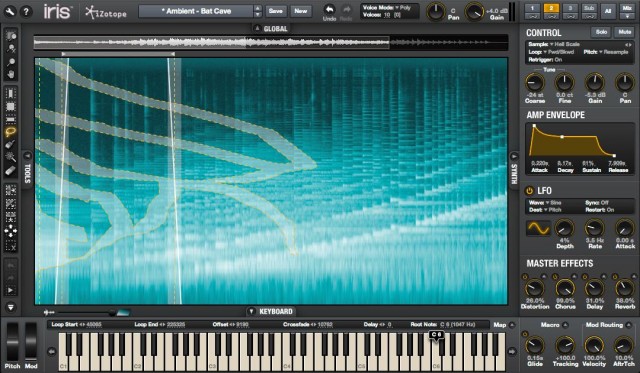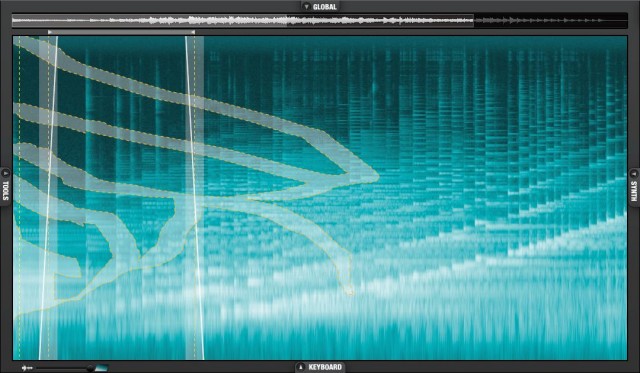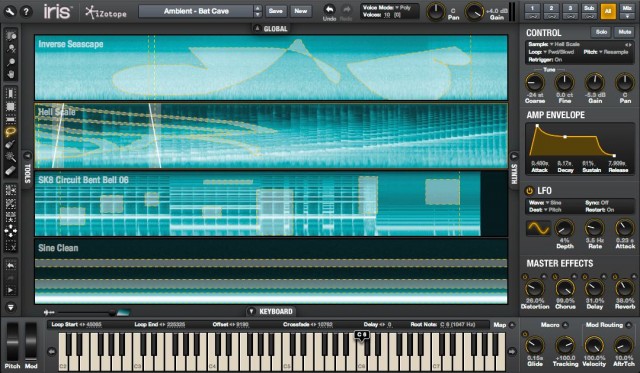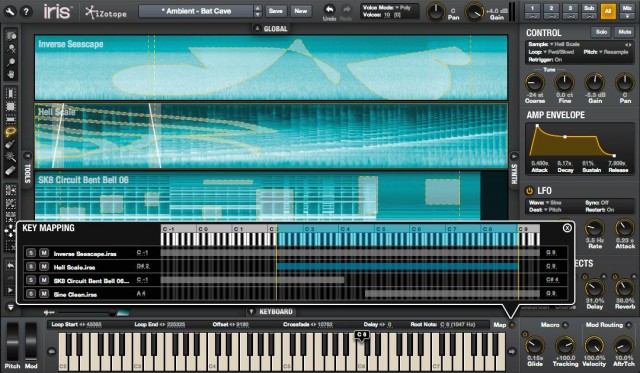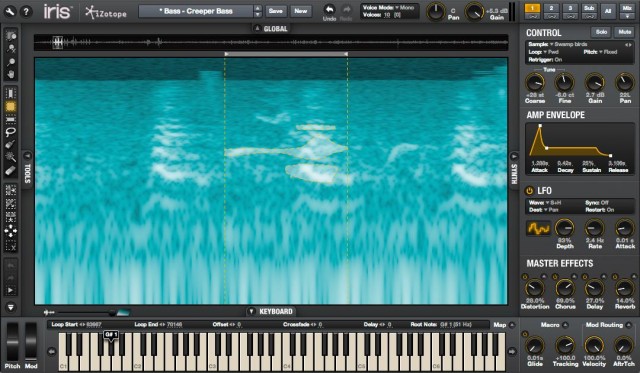Imagine working with sound design by painting with spectra, then applying those spectra to instruments you can play in real-time, and you’ve got the basic notion of iZotope Iris. The dream of combining graphics tools, a la Photoshop, with sonic ones has been in the minds of creative computer users for some time. Iris is a major landmark, though: instead of just being an editing tool, it turns sonic selection into something you can use in a synth. It lets you do your creative sound editing, but then play those sounds live, transforming the technique into an instrument.
In fact, Iris looks like just what I dreamed of having back in the 90s when I first played with U&I Software’s graphic sound manipulation tool MetaSynth. (Developer Eric Wenger, alongside his former colleague Kai Krause, was an advocate of novel graphical interfaces in place of the run-of-the-mill, cut-and-paste UI. MetaSynth remains an amazing tool, and since Iris can import sounds, using the two together could be mind-blowing.) Since MetaSynth, we’ve seen other efforts, like selection tools in Adobe’s own Soundbooth. iZotope bested those efforts with the most powerful graphical editing tool I’ve seen yet, in their RX product. Now, at last, you can use those same tools to create new sounds, not just restore old ones, and then jam with the results.
Here’s what you get:
- Extra spectra from a graphical view of the sound, using familiar graphical selection tools (even a handy Magic Wand)
- Layer spectra together
- Play the sounds from a MIDI controller
- Use standard synth tools: tuning, amplitude envelope, LFO, modulation.
- Send effects: distortion (tube, clipping, scream, etc.), chorus, delay, reverb.
- Multimode filters.
- Import your own sounds, or use one from a 4 GB library of sounds – either as the basis of your own sound designs, or using an existing preset. (iZotope promises recordings of insects, animals, machines, vintage synthesizers, musical instruments and so on. Of course, nice as those are, some of the fun will be using this tool as an excuse to go out field recording.)
- Key mapping, so you can set up a performance multi with various presets – ideal for live performance and experimentation.
For more high-quality sound libraries with accompanying preset content that uses them, iZotope will sell you add-on libraries beyond the 4 GB already in the tool, entitled Glass and Wood, at US$49 and US$29, respectively. (I’ll let you figure out what sound content those cover.)
In fact, the only thing missing here, really, is the ability to manipulate the spectral stuff itself live. The selection is mainly still an editing process, but once you do have your spectra selected, everything else is playable in real-time.
Iris available now. It’ll eventually cost US$249, or $299 with the Glass and Wood libraries bundled, but for now, those are reduced to $149 and $199 until May 4.
This video provides the best explanation of how the interface works:
And here are some of the sounds you might make:
I’m excited to begin working with this one; it looks like something really unique, entirely distinct from the various work-alike instruments out there. You could almost make a whole album with this one tool … and a lot of (very enjoyable) time. More on working with Iris hands-on soon.
A demo is available – including ten days unlimited use, followed by a demo mode.
Iris runs standalone, or as a VST, AU (on Mac), or RTAS on Mac/Windows.
http://www.izotope.com/products/audio/iris/
